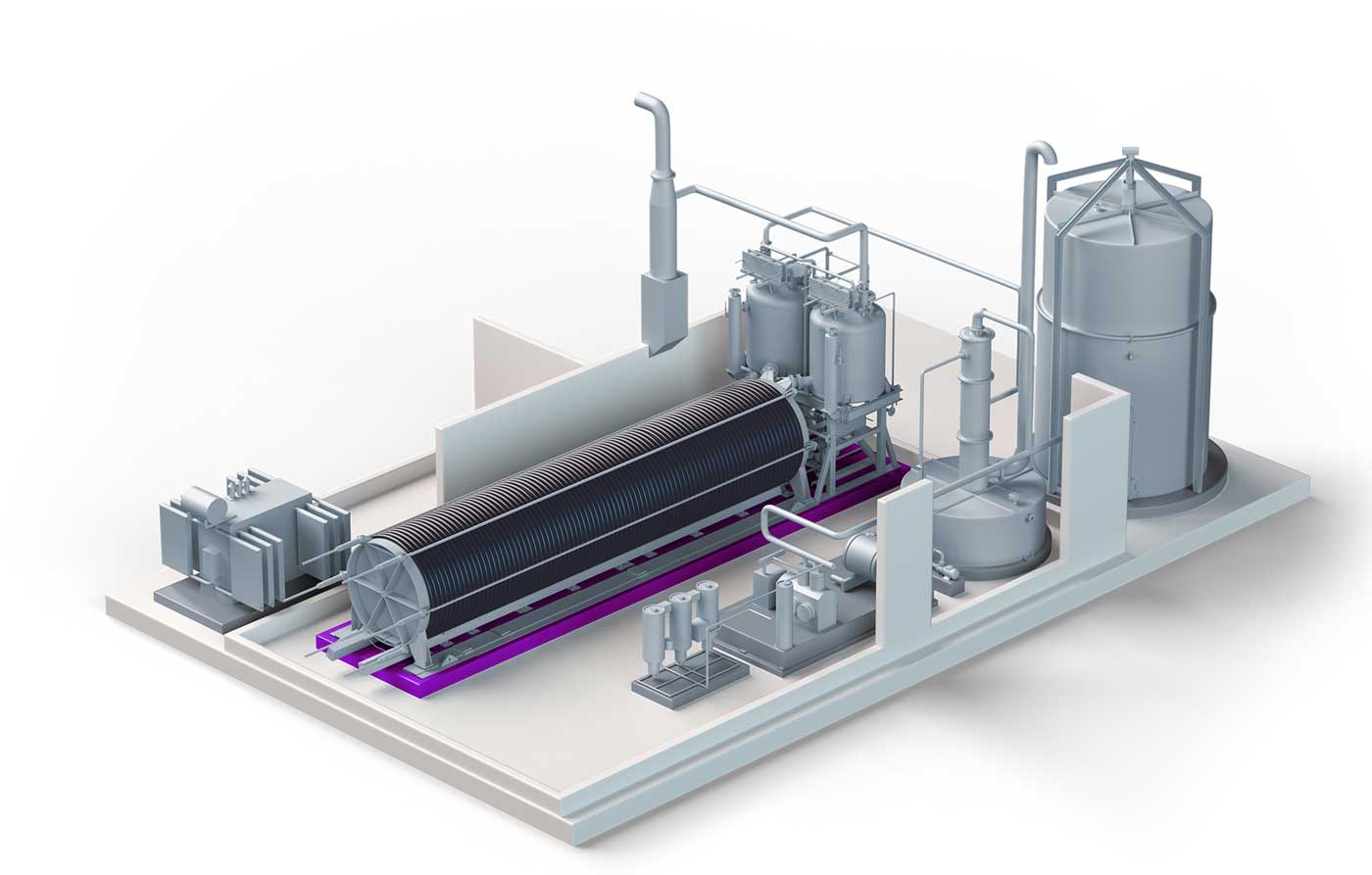Table of Contents
Key takeaways
- Cosmic dominance of hydrogen: Hydrogen is the most abundant element in the universe, playing a key role in the formation of stars and galaxies.
- Abundance of hydrogen on earth: While not abundant in its free state on Earth, hydrogen is present in water and organic matter, with significant energy potential.
- Versatile use of hydrogen: Hydrogen is used as a clean fuel in transportation, renewable energy storage, and electricity production, contributing to an energy transition toward cleaner and sustainable sources.
Hydrogen, the most abundant element in the universe, is becoming a crucial protagonist in our quest for a sustainable energy future. This article, entitled “Where do we find Hydrogen?”, is designed to highlight the growing importance of hydrogen in the energy sector, while exploring its diverse sources and innovative applications. We dive into the fascinating world of hydrogen, from its cosmic omnipresence to its terrestrial presence, and from its industrial production to its revolutionary role as a clean fuel. Navigating through these aspects, this article offers a comprehensive perspective on hydrogen’s potential to propel a transition to cleaner, more sustainable energy sources.
Hydrogen in the universe and on earth
Hydrogen in the universe
Hydrogen, the simplest and most abundant chemical element in the universe, plays a fundamental role in cosmology and astrophysics. Composed of a single proton and an electron, hydrogen accounts for around 75% of the baryonic mass of the universe. This predominance makes it essential for understanding the formation and evolution of stars and galaxies.
In stars, hydrogen is the main fuel for nuclear fusion reactions. In stars like our sun, hydrogen fuses to form helium, releasing a phenomenal amount of energy. This energy is the main source of light and heat for the planets in the solar system. Hydrogen is also involved in the formation of the universe’s first stars, a process crucial to the creation of heavier elements and the structuring of the universe as we know it.
Nebulae, clouds of gas and dust composed mainly of hydrogen, are the birthplaces of stars. These nebulae, like the famous Orion Nebula, are regions where hydrogen condenses under gravity to form new stars. This cycle of birth, life and death of stars ensures the continuity of hydrogen’s role in the universe.
Hydrogen on earth
On Earth, hydrogen does not exist in a free state in large quantities due to its extreme lightness, which causes it to escape from the Earth’s atmosphere. However, it is abundant in combined forms, the most common being water (H₂O), where it binds to oxygen. Hydrogen is also present in organic matter, forming part of numerous compounds such as hydrocarbons and proteins.
Hydrogen is mainly used by man as a gas. It is obtained either by industrial processes such as methane reforming, or by water electrolysis, a process that separates hydrogen from oxygen. Although less visible than in the universe, hydrogen on Earth is a key player in many industrial processes and represents an important potential energy source for the future.
Industrial hydrogen production
Hydrogen production methods
The industrial production of hydrogen is crucial to its use in a variety of applications, particularly energy. Two main methods currently dominate large-scale hydrogen production: water electrolysis and methane reforming.
Water electrolysis is a process in which electricity is used to break down water into oxygen and hydrogen. This method is particularly attractive when it uses electricity from renewable sources, such as solar or wind power, making hydrogen production totally green and sustainable. However, its high cost and the need for large quantities of clean electricity are challenges to be overcome for its large-scale implementation.
Methane reforming is currently the most widespread method for producing hydrogen. It involves the reaction of methane (natural gas) with steam at high temperature to produce hydrogen and carbon dioxide. Although this method is more economical than electrolysis, it is criticized for its CO2 emissions, constraining its alignment with sustainability and greenhouse gas reduction objectives.
Industrial sources of hydrogen
Industrial sources of hydrogen are as varied as the methods used to produce it. Hydrogen production facilities are generally located close to major industrial centers, such as oil refineries, where hydrogen is used for processes like hydrocracking and desulfurization.
What’s more, new projects and facilities are coming on stream, particularly those aimed at producing green hydrogen. These facilities are often linked to renewable energy projects, such as wind or solar farms, where hydrogen is produced by electrolysis, reducing the carbon footprint of the process.
Hydrogen storage sites also play an important role in managing hydrogen supply and demand. Hydrogen can be stored in gaseous or liquid form, each with its own technological and safety challenges.
The industrial production of hydrogen is therefore a rapidly evolving sector, with increasing attention being paid to the production of green hydrogen and the reduction of environmental impacts. These developments are essential to ensure a stable and sustainable supply of hydrogen, supporting its growing role in the global energy sector.
Hydrogen use in the energy sector
Hydrogen as a clean fuel
Hydrogen is at the forefront of the clean energy revolution, particularly in the transport sector. Known for its high energy density and water-only combustion, hydrogen offers an attractive solution to the environmental challenges posed by fossil fuels. Its use as a clean fuel in fuel cell vehicles represents a major step forward. These vehicles convert hydrogen into electricity, powering their electric motors. With recharging times comparable to those of conventional cars and a range greater than that of electric vehicles, hydrogen is a viable alternative for reducing greenhouse gas emissions in road transport.
Initiatives to integrate hydrogen into public transport systems, such as hydrogen-powered buses, are also gaining in popularity. These buses are already in service in several cities around the world, proving that hydrogen can effectively replace conventional fuels in the public transport sector. Logistics, particularly in the shipping and aviation sectors, is also actively exploring the use of hydrogen to reduce its carbon footprint.
Hydrogen in energy production
In addition to its role in transport, hydrogen plays a crucial role in power generation. Hydrogen power plants, which convert hydrogen into electricity, are an innovative way of storing surplus renewable energy. In periods of low demand, electricity from renewable sources can be used to produce hydrogen by electrolysis. This stored hydrogen can then be converted back into electricity during peak demand, providing a clean, efficient energy storage solution.
Fuel cells, another important application for hydrogen, are used to provide energy in a variety of contexts, from small electronic devices to large power plants. These cells convert hydrogen and oxygen into electricity, producing water and heat as their only by-products. Their ability to provide clean, continuous power makes them ideal for applications such as standby systems, mobile power units and even in the residential sector for domestic power supply.
Hydrogen also plays a significant role in stabilizing energy networks. By combining renewable energy sources with hydrogen production, it is possible to create more flexible and resilient energy systems. This integration contributes to the transition towards energy networks that are less dependent on fossil fuels, thus pointing the way to a more sustainable future.




